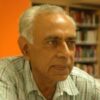Elderly Populations
TRANSCEND MEMBERS, 28 Nov 2022
Dr. Ravi P. Bhatia – TRANSCEND Media Service
India has some 1.3 billion inhabitants, the second highest in the world after the Chinese population of about 1.4 billion. If the present conditions continue, we may exceed the Chinese in another year and may equal 1.5 billion by 2030. What are some measures India can take so that the population growth slows down?
One action is to provide suitable contraceptives to both urban and rural women. We should also invest more in peoples’ health — from about 1.4 % of our GDP to 2.5 % or more. We should also create situations that encourage women to get married later so that number of children per family, also decrease. With these measures, our population would stabilise by about 2050.
An interesting aspect of population studies is the replacement level of 2.1 children to replace the two parents. This number is small because of general improvement of children’s health, as well as the fact that it is difficult to take care of children’s needs — health, education, skills etc. Fewer the number of children, easier it would be to take care of the basic needs of children.
As the health of people improves and number of children per family decreases, the percentage of older people (60 years or more) in the population rises.
It may be noted that in 2011 population of the elderly was about 104 million with their share in the total population being about 10%. Current trends of population suggest that elderly population would become 194 million by 2031 and keep increasing.
This has serious implications for the country’s economy and welfare.. Questions of employment facilities for the elderly also become pertinent.
These include social security as well as overall health — physical, mental of elderly people. Another problem likely to occur is that of conflicts that may arise between this section of the population and the younger section. Many types of jobs that the younger population could be engaged in, would now be denied to them because they could be shifted to the older people.
To consider these and other issues, October 1 has been declared as the International Day of Older People.
Apart from the above problems highlighted in terms of health, nutrition, medical facilities, the elderly people generally suffer from isolation and loneliness and not having independent decision making role. Elderly people may be encouraged to pursue some academic activities— going to a library or attending some lectures of common interest.
If an elderly person wanted to go for vacation or visit some religious places, he is unable to proceed independently; he has to persuade some younger person of the family to accompany him. There are some associations of elderly people but joining them is not an easy task and may become expensive financially.
Overall, despite the declaration of 1 Oct as International Day of Older People and other suitable measures adopted, the problems of the elderly are acute and these have to be considered holistically.
Let us consider the above issues with sympathy and an open mind. We hope that we will find suitable measures to tackle them. Then the conflicts between elderly and young people would also be eliminated — if not totally, substantially.
______________________________________________
 Dr Ravi P Bhatia is a member of the TRANSCEND Network for Peace Development Environment, an educationist, Gandhian scholar and peace researcher. Retired professor, Delhi University. His new book, A Garland of Ideas—Gandhian, Religious, Educational, Environmental was published recently in Delhi. ravipbhatia@gmail.com
Dr Ravi P Bhatia is a member of the TRANSCEND Network for Peace Development Environment, an educationist, Gandhian scholar and peace researcher. Retired professor, Delhi University. His new book, A Garland of Ideas—Gandhian, Religious, Educational, Environmental was published recently in Delhi. ravipbhatia@gmail.com
Tags: China, India, Overpopulation
This article originally appeared on Transcend Media Service (TMS) on 28 Nov 2022.
Anticopyright: Editorials and articles originated on TMS may be freely reprinted, disseminated, translated and used as background material, provided an acknowledgement and link to the source, TMS: Elderly Populations, is included. Thank you.
If you enjoyed this article, please donate to TMS to join the growing list of TMS Supporters.

This work is licensed under a CC BY-NC 4.0 License.